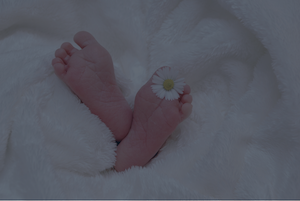Tweens ready for Tinker Bell
NEW YORK — All the cool girls will be wearing Tinker Bell on their backs when they show up at school this year, at least if The Walt Disney Company's market researchers got it right.
Disney is putting Tinker Bell, who just happens to be starring in her own feature film in 2007, front and center on fashion-forward denim jackets, backpacks, sweat shirts and nightgowns. She's getting prime real estate in Disney stores, at the expense of some other Disney characters.
Tinker Bell and her fairy friends have a certain cachet with grade-school girls, an important demographic in the world of kiddie clothes. Some of those girls, who've been wearing Cinderella or Sleeping Beauty togs for years, might feel they've somewhat outgrown the princesses.
"Girls 6 and up — they want to be Tinker Bell's friend," maintains Jim Fielding, executive vice president of retail, sales and marketing for Disney Consumer Products. "She's a little sassy and has a fuller life. She has an aspirational lifestyle."
Tinker Bell will have competition, though.
Hasbro is going after the same 6- to 9-year-old girl with its Littlest Pet Shop characters, who are featured on journals and T-shirts being sold at tween retailer Limited Too. And Mattel continues to find new ways to put Barbie on products. This year, Barbie will be on snowboards, and the newest Barbie backpack, on display at the recent Licensing 2006 International trade show in New York, included two walkie-talkies styled as mobile phones.
Disney's elevation of Tinker Bell to licensed product superstar was a calculated move. The supporting character from "Peter Pan" was ripe for stardom, Fielding says, because she's been off the radar for 50 years, yet people had a favorable opinion of her when asked.
"We track character equity. We analyze questions like unaided recall and `Who do you want on a product?' When you look at the top 20 and someone new comes in at 17 or 18, we galvanize," he says.
So it started with chapter books last year, apparel and accessories this year, and then Tinker Bell, as voiced by Brittany Murphy, hits the big screen next year. Disney uses retailers as a seeding tool to generate excitement for the movie — which, in turn, should fuel more retail sales.
In an industry that often depends on a new movie, book or TV show to sell a product, Barbie has an advantage, says Richard Dickson, senior vice president of media and entertainment marketing for Mattel Brands: She's already considered a fashion icon.
"Now we have grandmas that reference Barbie, and those grandmas want their granddaughters to experience the same friendship," he says.
Some 17- and 18-year-olds still think Barbie's cool, according to Dickson, and that has an effect on younger girls.
Similar strategy was behind Hasbro's relaunch of My Little Pony in 2003.
"We asked about the girls who grew up with My Little Pony in '83-'87: 'Where are they now?"' says Bryony Bouyer, senior vice president of marketing for Hasbro Properties group.
Turns out they're moms and aunts now.
Today's grade-schooler, however, is looking for something a bit edgier — and that's where Littlest Pet Shop comes in. The characters look like average household pets seen through the eyes of a Japanese manga animator, and Bouyer says Hasbro works hard to keep them cool and trendy.
So far, it seems to be working. Since their relaunch last year, 40 million Littlest Pet Shop toy pets have been sold.
That came after a so-so launch of the product in the late 1990s. Bouyer says Hasbro now is taking its time, waiting for the characters to build a relationship with the target audience — which for most licensed products taps out at about age 10.
First, the company introduces a toy, then journals and diaries, then T-shirts and eventually books.
For teenage girls, Disney has had unexpected success with merchandise from the made-for-TV movie "High School Musical." Disney rushed to get the products into stores in May, although the show only debuted in January, says Fielding.
What about boys, some of whom also are fans of "High School Musical"?
They're not the ones who are going to splash it across their chests, Fielding says. Boys, he says, are conscious of wearing characters after age 6, and tend to turn to sports and games, not role play or collectible dolls.
Most boys would rather have a "Pirates of the Caribbean: Dead Man's Chest" videogame, Fielding said.
"It's what they spend their money on," he says.














